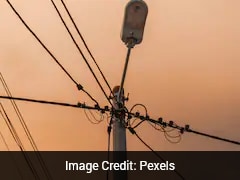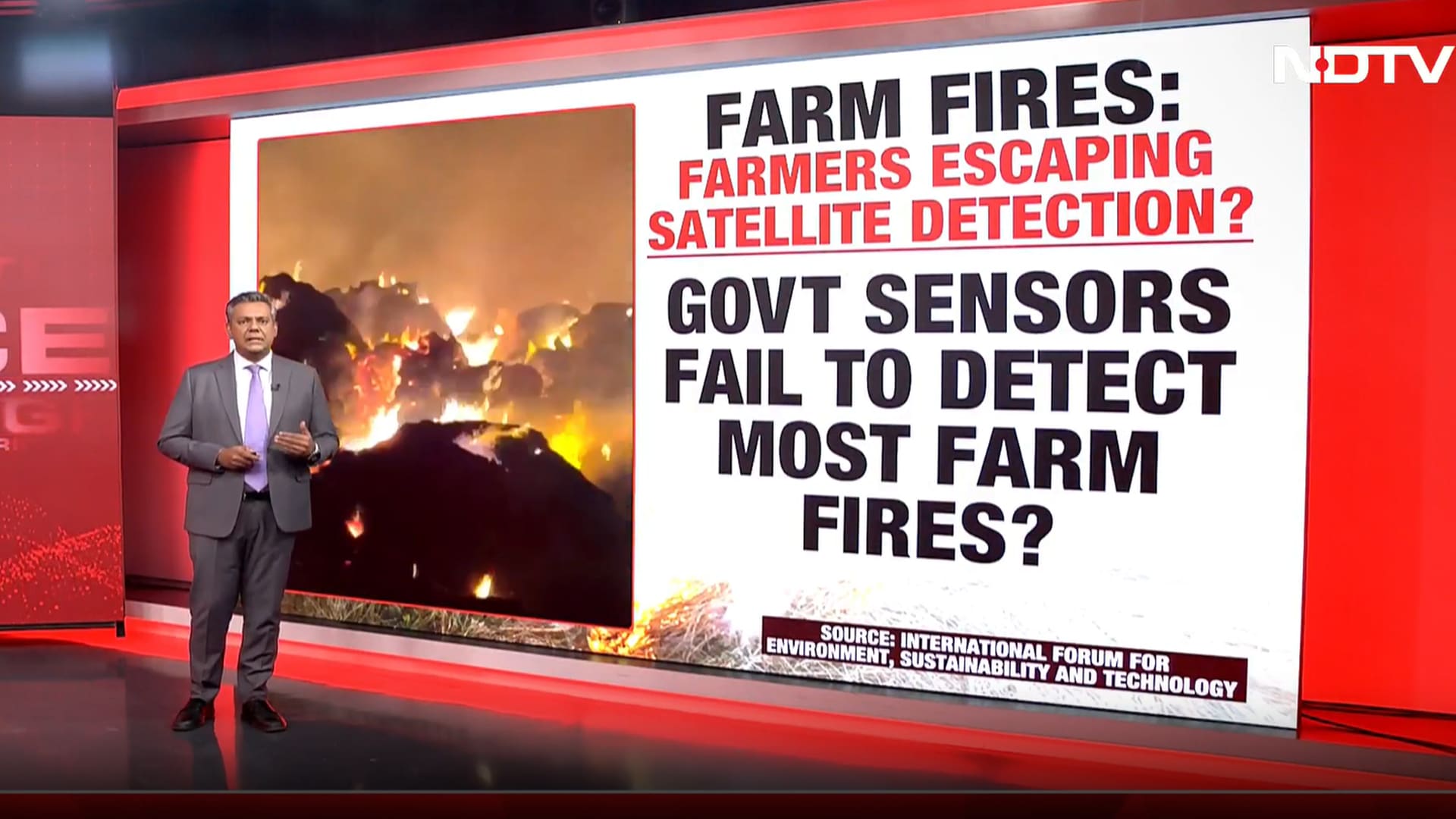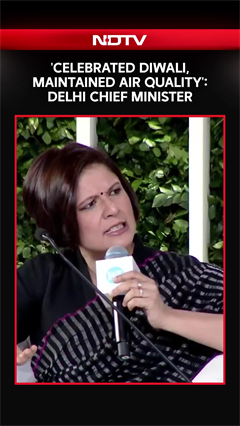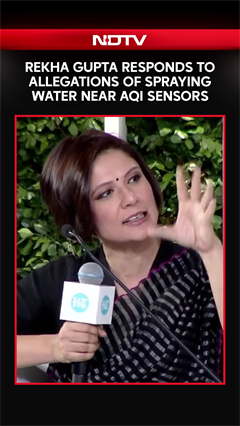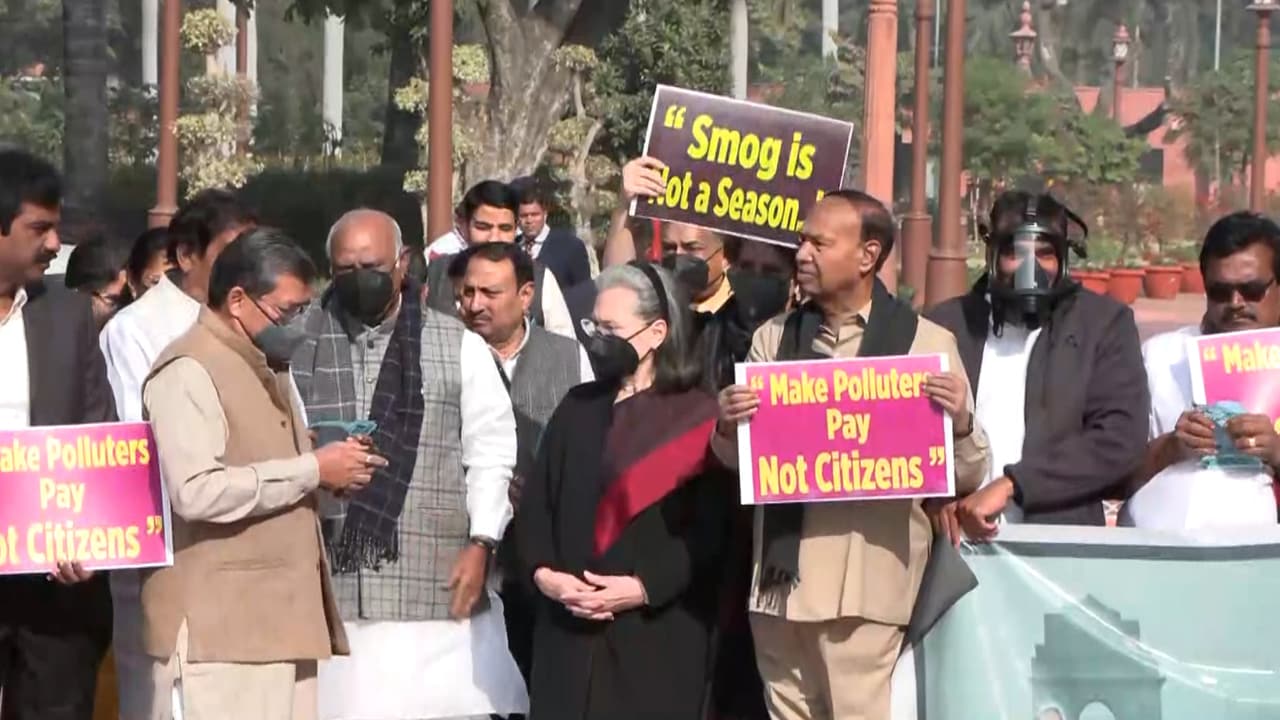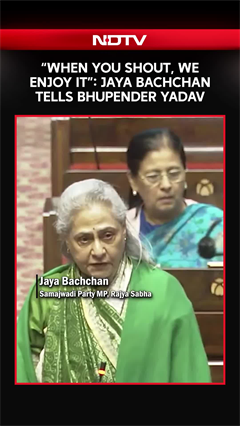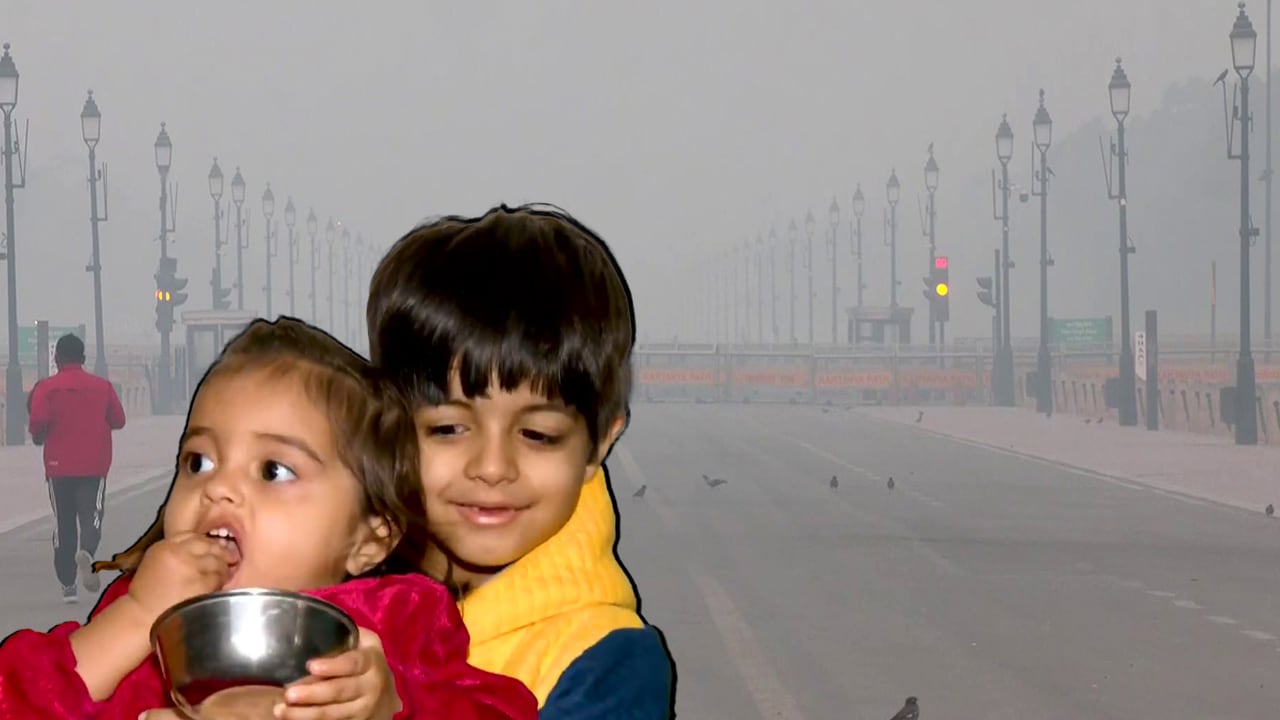- Home/
- 'Very Poor' Air Quality On Diwali Morning In Delhi After Night Of Crackers
'Very Poor' Air Quality On Diwali Morning In Delhi After Night Of Crackers
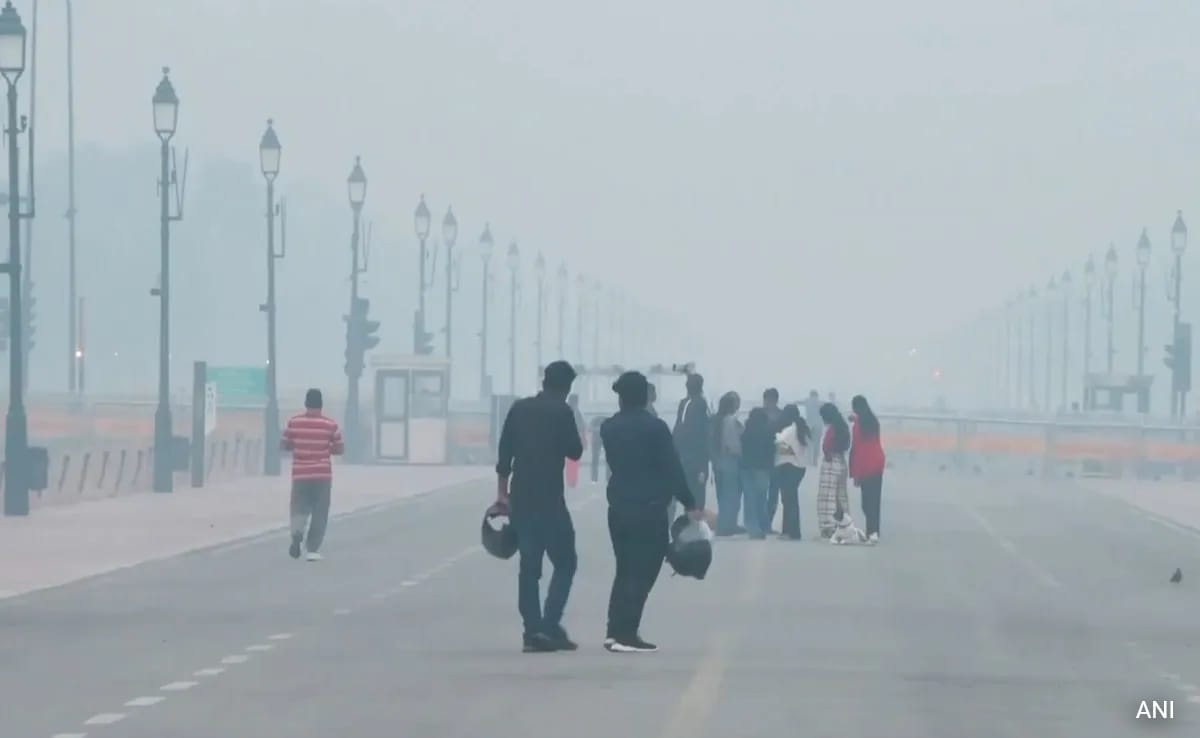
Highlights
- Delhi woke up to toxic air on Diwali morning
- The capital's overall air quality index worsened to the "very poor" category
- Two areas -- Anand Vihar and Wazirpur -- recorded severe AQI levels
Delhi woke up to toxic air on Diwali morning with the air quality index (AQI) worsening to the "very poor" category. According to the Central Pollution Control Board (CPCB), the city recorded an overall AQI of 335 at 8 am after people burst crackers, causing severe noise pollution and blanketing the national capital in smoke.
Out of approximately 38 monitoring stations in Delhi, most recorded AQI levels above 300 ("very poor"), while Anand Vihar (414) and Wazirpur (407) were in the "severe" category.
#WATCH | Visuals from the India Gate as GRAP-2 invoked in Delhi.
— ANI (@ANI) October 20, 2025
The Air Quality Index (AQI) around the India Gate was recorded at 347, in the 'Severe' category, in Delhi this morning as per the Central Pollution Control Board (CPCB). pic.twitter.com/5gbpOvT5hp
#WATCH | Visuals from Akshardham temple as GRAP-2 invoked in Delhi.
— ANI (@ANI) October 20, 2025
The Air Quality Index (AQI) around Akshardham was recorded at 411, in the 'Severe' category, in Delhi this morning as per the Central Pollution Control Board (CPCB). pic.twitter.com/QD5N2oWJDM
Two monitoring stations -- Sri Aurobindo Marg (165) and DTU (198) -- were in the "moderate" category.
An AQI between 0 and 50 is considered "good", 51 to 100 "satisfactory", 101 to 200 "moderate", 201 to 300 "poor", 301 to 400 "very poor", and 401 to 500 "severe".
The Board's forecast for the coming days indicates a similar trend, with the air quality expected to deteriorate further into the "severe" category on Tuesday and Wednesday.
Only Green Crackers Allowed On Diwali
The Supreme Court has permitted the sale and bursting of only green firecrackers in Delhi-NCR during Diwali with certain conditions.
The use of green crackers will be confined to specific hours -- 6 am to 7 pm on the day before Diwali and 8 am to 10 pm on the festival day.
There was a blanket ban on the manufacture, sale and use of fireworks before.
Enhanced Anti-Pollution Curbs In Delhi
The Commission for Air Quality Management (CAQM) on Sunday evening invoked Stage II of the Graded Response Action Plan (GRAP) across Delhi-NCR, in addition to Stage I actions already in force since October 14.
The move came after the Sub-Committee on GRAP on Saturday reviewed the worsening pollution levels and forecasts by the India Meteorological Department (IMD) and the Indian Institute of Tropical Meteorology (IITM), which warned of further deterioration in the coming days.
Under Stage II of GRAP, several curbs and intensified actions include daily mechanical or vacuum sweeping and water sprinkling on identified roads, preferably before peak traffic hours, to control dust.
Construction and demolition sites face intensified inspections to ensure strict enforcement of dust control measures.
To promote cleaner mobility, the GRAP Stage II mandates augmentation of public transport services through additional CNG and electric buses and increased frequency of metro services, along with differential fare rates to encourage off-peak travel.
Resident welfare associations (RWAs) are required to provide electric heaters to staff such as guards, gardeners and sanitation workers to prevent open burning of biomass and solid waste during winters.
Entry of inter-state buses into Delhi is restricted to those running on CNG, EVs or BS-VI diesel, excluding tourist buses operating under all-India permits.
GRAP categorises air quality into four stages: Stage I (Poor) with AQI between 201 and 300, Stage II (Very Poor) between 301 and 400, Stage III (Severe) between 401 and 450, and Stage IV (Severe Plus) for AQI above 450.
Delhi Chief Minister's Request On Diwali
Chief Minister Rekha Gupta appealed to the people of Delhi to protect the city from pollution by using only green firecrackers during Diwali.
In a message to the people of Delhi, she encouraged people to celebrate the festival in traditional ways by lighting diyas, making rangoli and sharing sweets.
She said that Diwali, the festival of lights, should be celebrated in an atmosphere of peace and harmony.
(With agency inputs)
also read
Latest Stories
- Press Trust of India | Wednesday December 10, 2025 , New Delhi
Amid high pollution levels in the capital, the Delhi Pollution Control Committee (DPCC) has issued directions mandating a strict ban on the use of coal and firewood in tandoors across all hotels, restaurants and open eateries in the city.
- Press Trust of India | Monday December 08, 2025 , New Delhi
Delhi's air quality remained locked in the 'very poor' category on Monday, with the air quality index (AQI) staying above 300, while forecasts suggest that pollution levels are likely to deteriorate further.
- Reported by Ashwine Kumar Singh | Monday December 08, 2025 , New Delhi
Delhi Chief Minister Rekha Gupta's remarks about the government using mist sprayers to contain pollution at hotspots has drawn a stinging response from her predecessor Arvind Kejriwal.
- Written by Rupashi Chhabra | Monday December 08, 2025
Maintaining lung health is essential for longevity. Here are five simple steps to perform an anti-pollution lung detox for long-term well-being.
- Edited by Astitva Raj | Sunday December 07, 2025
His post clearly explains the various daily challenges he faced after moving to India from Ireland.
................................ Advertisement ................................
Latest Videos
Opinion
Blog | Well Done, Delhi. You've Turned Lung Sacrifice Into A Badge Of HonourSaikat Kumar Bose
Monday November 10, 2025Till some years back, Delhiites would ask angry questions to those in power about the capitals annual tryst with toxic air. This has changed. Those in the driving seat dont see the need to answer now.
Opinion | Why Indians Have Just Given Up On Air Pollution CrisisTanushree Ganguly
Friday December 20, 2024While some may argue that people in Delhi are now more aware of air pollution than they were a decade back, my rebuttal would be that awareness does not mean that people are concerned.
Opinion | You Must Outrage Over Filthy Air More Than Once A YearJyoti Pande Lavakare
Tuesday December 10, 2024Delhi welcomed us with monsoon rains and mangos. We were home. Fast forward a couple of years, in the winter of 2012, I found myself in denial about something other parents, mostly expats, were calling toxic air.
Opinion | Delhi's Air Pollution Situation Is Like A Bad MarriageNishtha Gautam
Friday November 22, 2024On a good day, such as today, the AQI reading in Delhi is 407. We are jubilant at the sickly sunshine trickling through the slightly dissipated smog. At least its not 1600.
दिवाली... पराली... सियासी जुगाली!Ashwini kumar
Monday November 18, 2024दिल्ली-एनसीआर में प्रदूषण का समाधान तो आज तक मिला नहीं. हर साल चिंतित होकर हम-आप सांसों की तकलीफ के साथ-साथ दिल और ब्लड प्रेशर के मरीज भी क्यों बनें?







